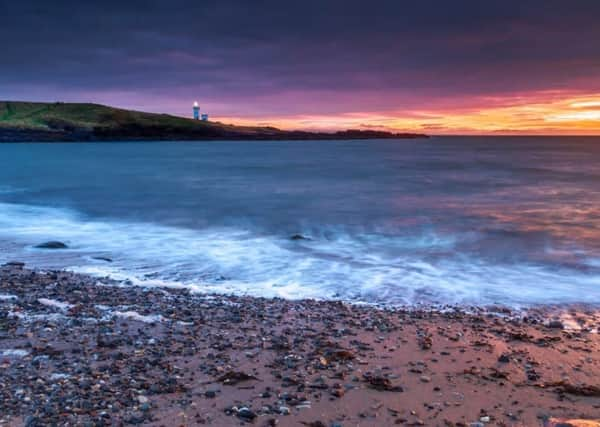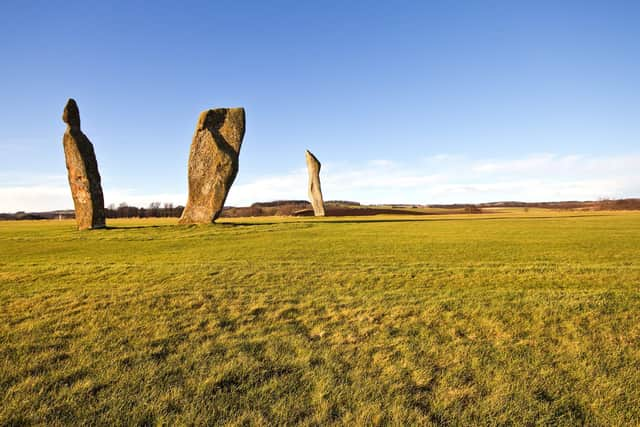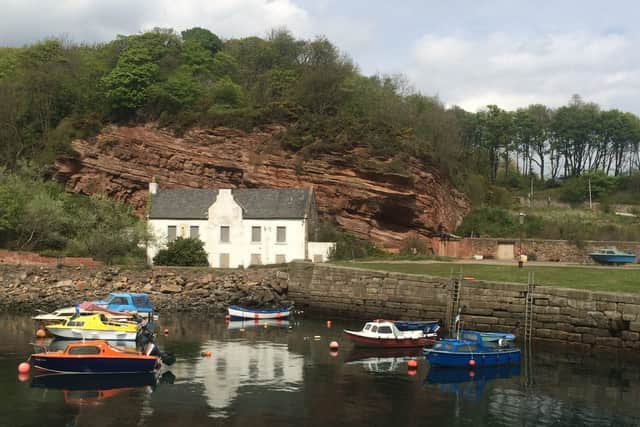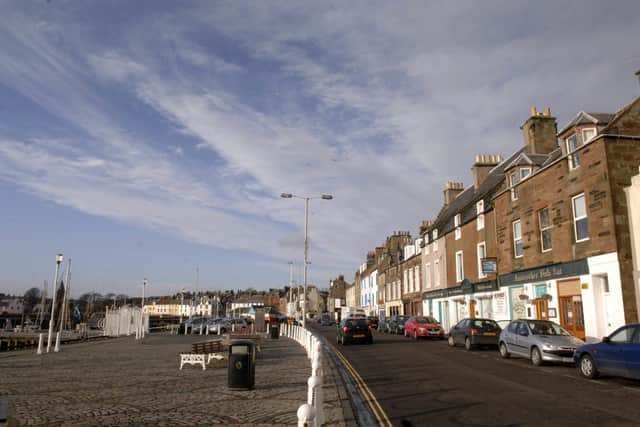Fife road trip: Outlander, the Rolling Stones and Robinson Crusoe


The Fife coast offers an extraordinary number of treasures – from pretty fishing villages to secret caves, windmills and standing stones. This single day road trip provides just a taster of what is on offer.
Outlander filming location
Start in Dysart Harbour.


Dysart’s origins go back to the 13th century and until fairly recently it was an entirely separate community before being consumed by Kirkcaldy.
Advertisement
Hide AdAdvertisement
Hide AdThe atmospheric harbour dates to the mid-15th century, and was once crowded with ships exporting salt and coal to Europe. Such were the connections, that locals were once called Little Hollanders. The old Harbourmaster’s House today is home to a café – not a bad place to start your trip.
Scenes from Outlander were filmed in Dysart (Picture: Sony)
The harbour doubled for the 18th century French port of Le Havre during series 2 of Outlander.


Now visit Pan Ha’, the row of houses under the tower dating from the 16th century onwards. The street name means a level area were salt pans were once located.
For centuries salt pans were dotted along the coast using local coal to fuel fires that evaporated salt water, with the resulting salt exported.
The fortified St Serf’s church tower looms behind, a reminder of days when locals sought refuge from marauders arriving by ship.
Ghosts of Fife's industrial past


When finished drive eastwards, looking out on the right for the winding tower of the Frances Colliery. It is a reminder of the coal industry that once dominated this part of Fife until the mid 1980s.
Turn right to reach the charming village of West Wemyss. The village was planned by the Wemyss family – aristocrats who have owned the land here since medieval times. Quiet today, in the past this village was a bustling place full of miners and their families, its harbour crowded with coal ships and fishing vessels.
Lundin Links Standing Stones (Picture: Alastair Philipson)
Walk along the sea front and turn left at the old tollbooth – once the administrative centre and jailhouse of the village.


Advertisement
Hide AdAdvertisement
Hide AdWalk underneath and pass by the Community Pub funded with lottery money. Many locals have links with the local Michael colliery – the largest in Scotland – that closed in 1967 after a fire killed nine men. You reach the church, and look past to see Wemyss castle, still occupied by the Wemyss family.
Ancient remnants of Scottish history
From here drive on, turning up the B930 and heading right (A915) until you reach Lundin. Turn left to the Ladies Golf Club and ask to cross the greens to reach the Standing Stones of Lundin (west of the club house).
These looming sandstone pillars reach up to 17 feet in height, and are thought to date from the 2nd millennium BC.
West Wemyss Harbour on the Fife coast (Photo: JP)
After the standing stones drive a short way and turn right into Lower Largo with its distinctive viaduct. This fishing village is best known for being the birthplace of Alexander Selkirk in 1676.


He spent four years as a castaway on a South Pacific island, and his story inspired Daniel’s Defoe’s story Robinson Crusoe.
If you park by the Crusoe Hotel you can walk east along Main Street to find a statute of Selkirk.
Skinny dippers and Rolling Stones
From Lower Largo continue to Elie, part of East Neuk, and famous for its sandy beaches. Drive along the High Street turning right along Wadeslea street, and then turn left into a car park. From here, with great views across Elie, walk out to the ruins of Lady’s Tower.
It was built in the late 18th century for Lady Janet Anstruther who changed here before swimming nude in the water below. If you have time walk to the Lighthouse, completed in 1908.
Advertisement
Hide AdAdvertisement
Hide AdEngineer David Alan Stevenson, grandson of lighthouse pioneer Robert Stevenson, was involved in its design.
From Elie continue to St Monans with its beautiful historic Kirk facing the Forth. Park by the harbour on the east side – the East Pier Smokehouse is a good stop for a meal.
Finish off your road trip with a treat at Anstruther Fish Bar (Photo: TSPL)
From here walk (there is a sign post) to St Monan’s Windmill. Dating from the last 18th century, this is the last windmill left in Fife, and is open on Wednesdays (1.30-4.30pm) and Saturday and Sunday (1.30pm-5pm). The windmill was used to pump salt water into the salt pans below.
After the windmill drive on, heading for Pittenweem, the busiest fishing village on this part of the coast.
Ian Stewart, original member of the Rolling Stones, was born here, and it hosts a famous arts festival each summer.
Follow the signposts for St Fillan’s Cave . According to legend the 8th century Irish Saint Fillan lived as a hermit here.
The tour finishes just along the coast in Anstruther, the largest of the fishing villages in East Neuk. If you have managed to resist eating too much already, treat yourself to fish and chips at Anstruther Fish bar.
Advertisement
Hide AdAdvertisement
Hide AdIt is owned by the Smith family who can trace their links to the fish trade for several generations and has won many national awards.
Stephen Millar is the author of 'London's Hidden Walks, Edinburgh's Hidden Walks and forthcoming The Tribes of Glasgow'